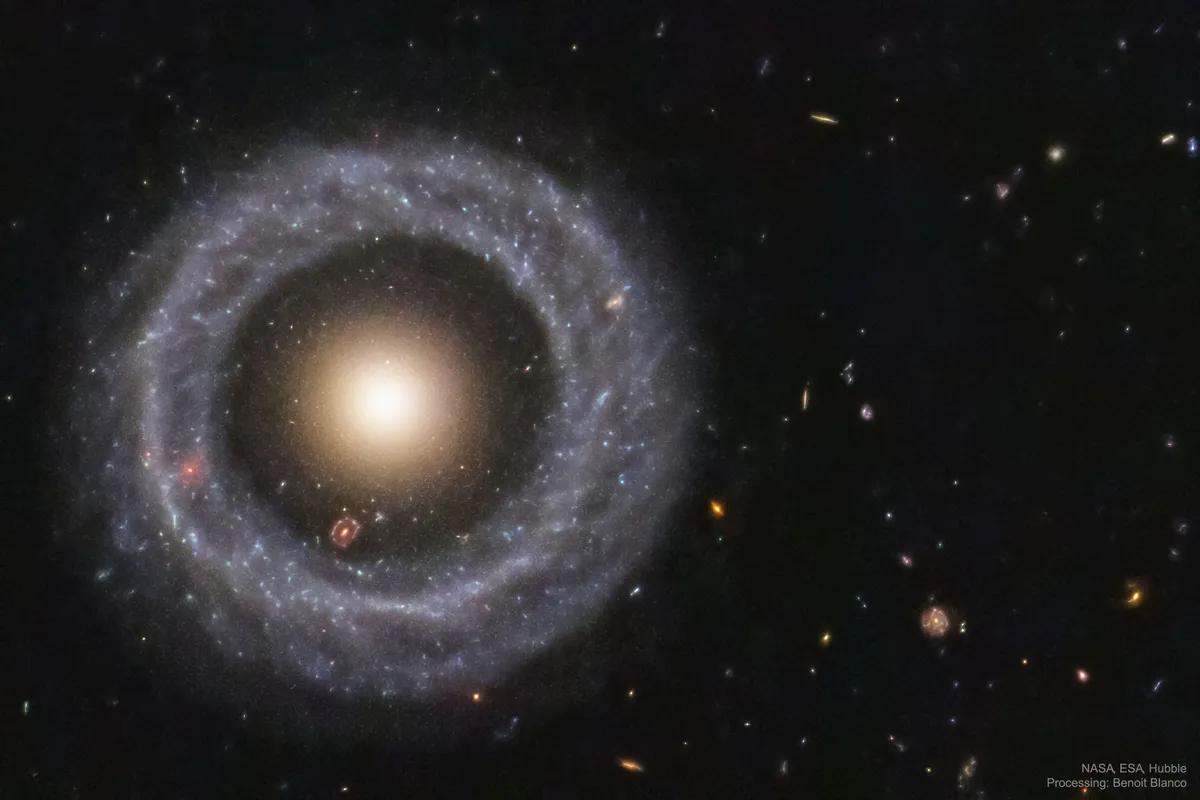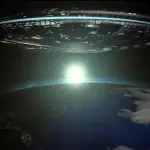Key Takeaways:
- Hoag’s object is a rare ring-shaped galaxy about 100,000 light-years across and 600 million light-years away.
- It has a perfectly symmetrical ring of young, blue stars circling a sphere of older, red stars.
- The cause of the ring shape is unknown; astronomers think it might be the result of an ancient galactic collision.
- Ring galaxies are very rare, making up less than 0.1% of all known galaxies.
- Hoag’s object is one of the most perfectly symmetrical ring galaxies ever found.
If you look closely at the serpent constellation in the northern sky, you might notice a galaxy within a galaxy.
This cosmic turducken, known as Hoag’s object, has perplexed stargazers since astronomer Arthur Hoag discovered it in 1950.

The object in question is a rare, ring-shaped galaxy about 100,000 light-years across (slightly larger than the Milky Way) and 600 million light-years away from Earth. An image of the oddball object taken by the Hubble Space Telescope and processed by geophysicist Benoit Blanco shows a bright ring of billions of blue stars forming a perfect circle around a much smaller and denser sphere of red stars. In the dark gap between the two stellar circles, another ring galaxy — much, much farther away from us — peeks out to say hello.
What’s going on here, and what ripped Hoag’s object in two? Astronomers are still unsure; ring galaxies make up less than 0.1% of all known galaxies, so they are not the easiest to study. Hoag himself proposed that the galaxy’s unique ring formation was simply an optical illusion caused by gravitational lensing. Later studies using better telescopes disproved this idea.
Another popular theory holds that Hoag’s object was once a more common, disk-shaped galaxy, but an ancient collision with a neighboring galaxy ripped a hole in the disk’s belly, permanently altering its gravitational pull. If such a collision occurred within the last 3 billion years, astronomers using radio telescopes should have been able to observe some of the aftermath. No such evidence has been discovered.
If there was a cosmic crash at the core of Hoag’s object, it must have occurred so long ago that all evidence has been lost. With only a few other known ring galaxies to study (none of which exhibit the perfectly symmetrical characteristics found in this one), Hoag’s object remains a mystery wrapped in a riddle inside an enigma — like a turducken.


